Predicting and Monitoring Propagation with DXLab
DXLab can be used to both predict and monitor propagation.
Predicting Propagation
DXLab's PropView component includes the VOACAP propagation engine, and uses it to compute and display an hour-by-hour graphical forecast of short-path or long-path propagation between your QTH and a location specified in the DX Station panel on the Main window's Parameters tab during a specified day. If you're specifying latitudes and longitudes, use ddd mm' ss" D notation, e.g. 43 25' 32" N; alternatively, specify a grid square and strike the Enter button:
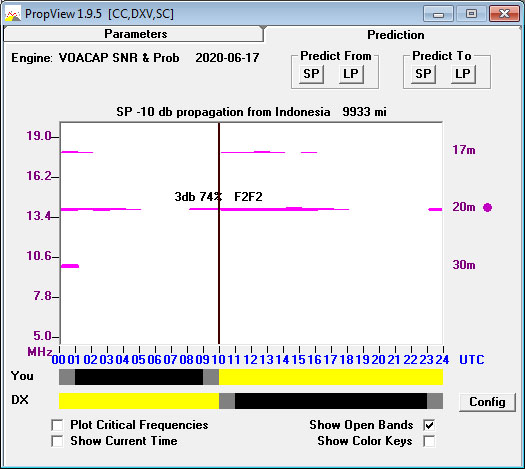
The thicker a horizontal magenta line, the higher the probability of an opening on that frequency at that time. Letting the mouse cursor hover over a section of magenta line for a few seconds will produce a popup bearing the details of propagation on that frequency at that time.
DXLab’s DXView enables you to obtain DX Information by several means:
DXLab’s SpotCollector component maintains a database with one entry for each active DX station, as reported by up to 4 DX Clusters or Skimmers (including the Remote Beacon Network), a local VHF/UHF Packet Cluster, the DX Summit web cluster, and local instances of WSJT-X.
You can select a location for which PropView will be generate and displayed a forecast by
Typing a callsign, callsign fragment, DXCC entity prefix, IOTA tag, or Maidenhead grid square into DXView's Info window
Clicking on a location in DXView's World Map window
Right-clicking on the entry for an active DX station in SpotCollector and then clicking on the Display current short path propagation or on the Display current long path propagation commands in the pop-up menu
Predicting Propagation to active DX Stations
SpotCollector can be configured to direct PropView to automatically generate shortpath and longpath propagation forecasts between each active DX station and your QTH, and can provide views of its Spot Database filtered by criteria that you specify; for example, here’s a tabular view of all active CW stations on 20m with whom the predicted probability of a short-path opening is greater than 50%:

The red-highlighted column shows the forecast short-path probability for reach station. The green highlighted columns show the locations from which each station has been reported; 4X1MM, for example, has been spotted from Asia and from the east coast of North America. The background color indicates participation in eQSL and LoTW:
Color
Participation
magenta
eQSL AG only
yellow
LoTW only
light blue
both eQSL AG and LoTW
You can use these propagation forecasts to hide spot database entries for DX stations that you probably can't hear.
Here’s a world map view of SpotCollector’s Spot Database showing 20m FT8 stations being decoded by a local instance of WSJT-X:
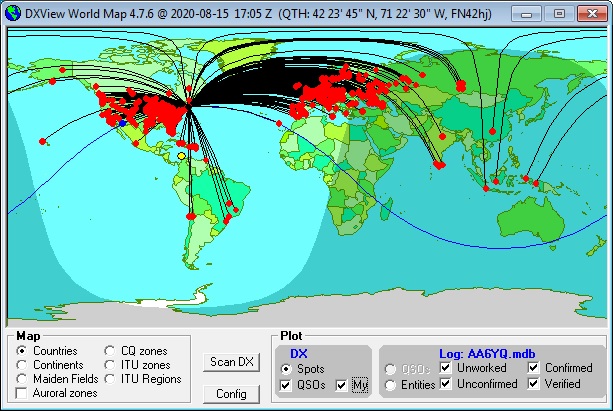
Checking the My box in the Plot panel on DXView's World Map window filters the display to show only stations that you've spotted.
Here's this morning's 6m opening to Europe displayed on Google Earth:
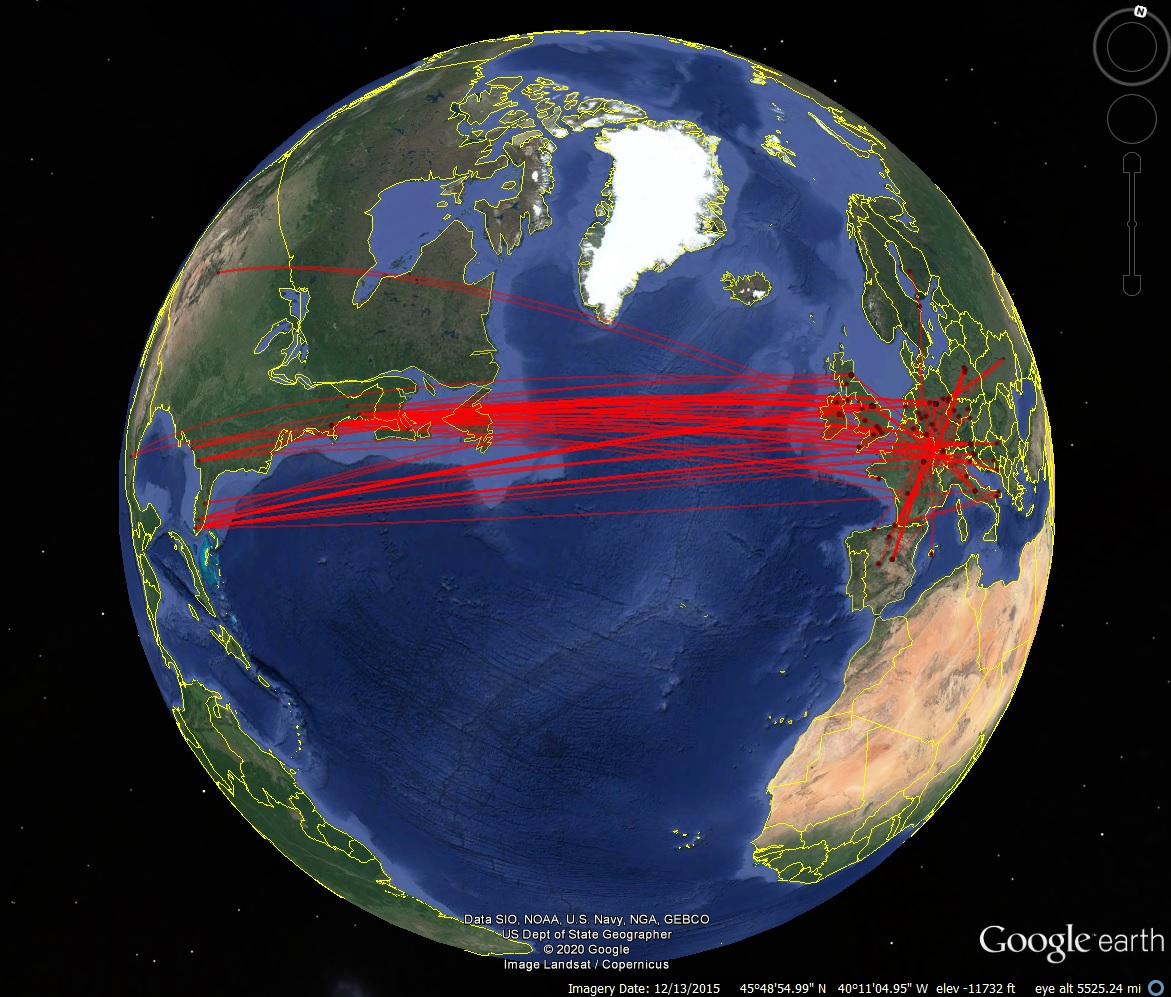
SpotCollector maintains live statistics showing the last 60 minutes’ newly reported DX stations by band, and by continent:
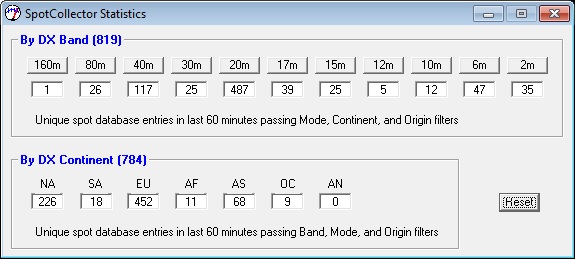
It can also provide a more detailed display showing the number of newly reported DX stations by band and by time-of-day:
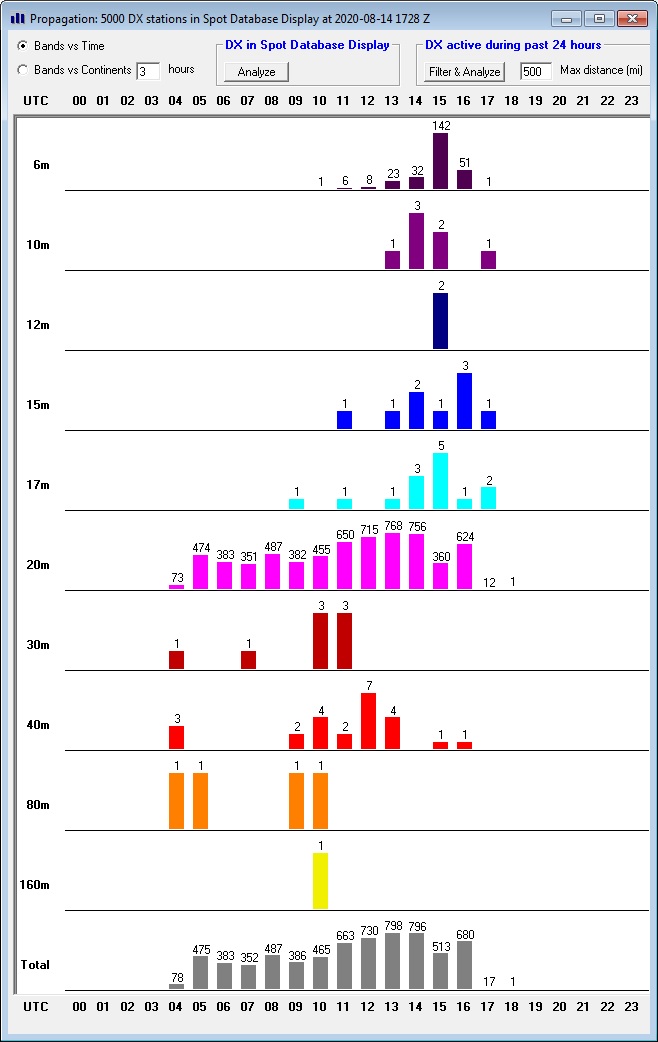
Note the morning 6m opening, and the large number of stations being reported by my instance of WSJT-X on 20m FT8.
For each active station decoded by a local instance of WSJT-X, SpotCollector retains its most recent SNR, lowest SNR , and highest SNR:
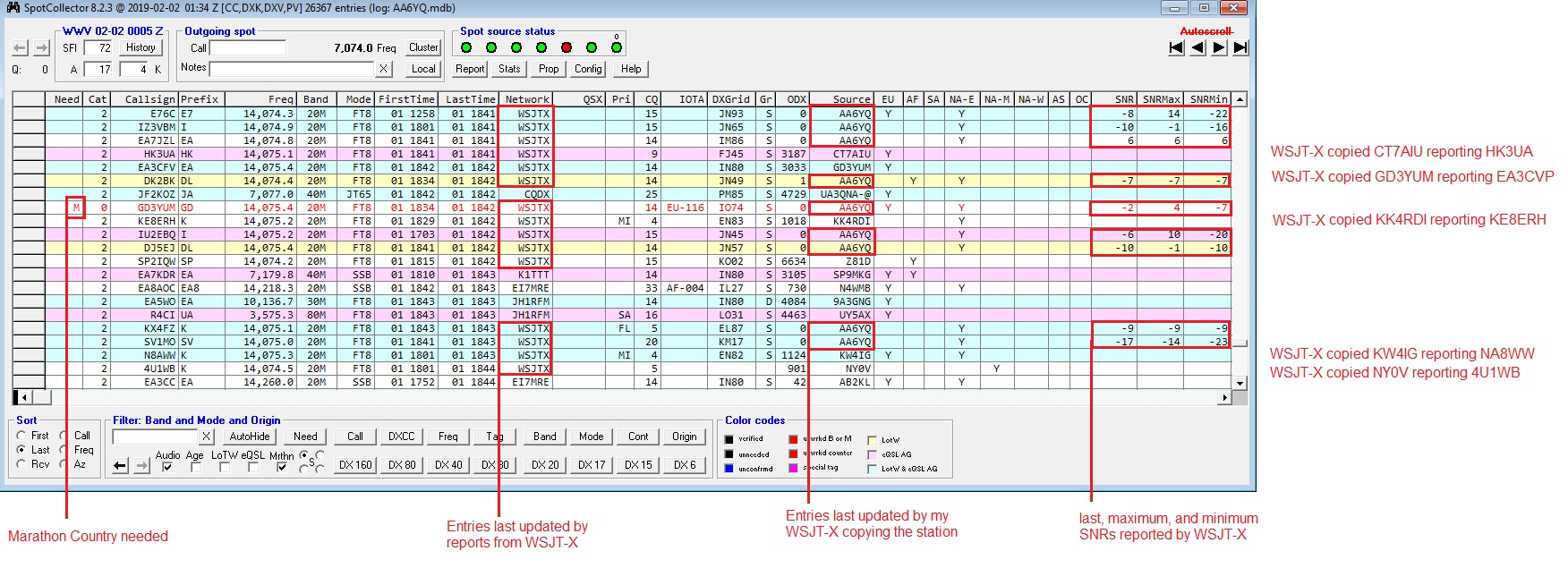
The entry for GD3YUM is highlighted in orange because I was competing in the CQ DX Marathon when the above screen shot was taken, and hadn't yet worked "Isle of Man" in FT8 during that year.
A quick band-by-band summary of showing active DX stations can be displayed with audio narration.
Predicting Grey-line Propagation
DXView can compute and display future grey-line openings between your QTH and any selected location:
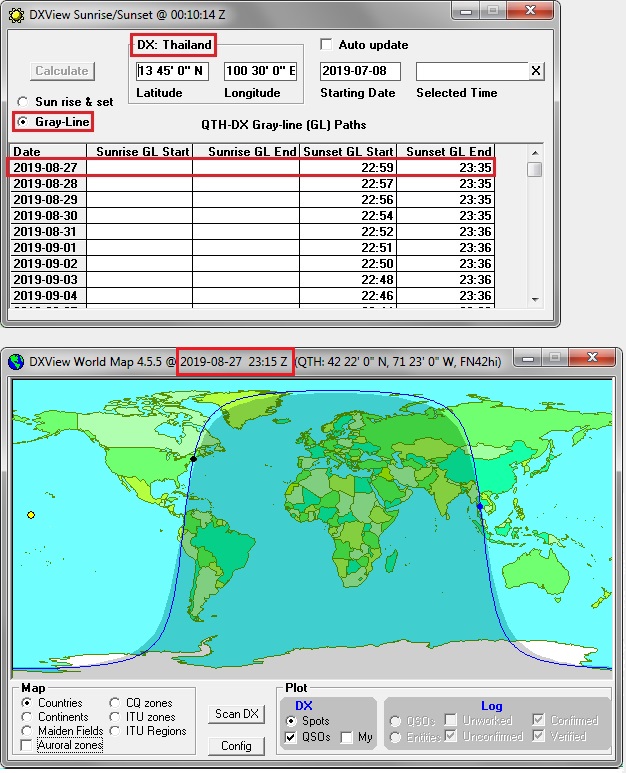
Monitoring Propagation
PropView can monitor the Northern California DX Foundation’s HF Beacon Network, enabling you to select a specific set of beacons to monitor, and then automatically QSYing your transceiver to monitor each beacon in sequence during its time slot:
![]()
Analyzing Actual Propagation Using Active DX Stations
SpotCollector can use reports of active DX stations by stations near your QTH to display
- your location's activity on each band by time of day
- your location's activity on each band by continent
- propagation openings between your location and a specific region of the world (or a specific callsign)
For example, this propagation view displays openings between Boston Massachusetts and the UK Bases on Cyprus DXCC entity by band and time-of-day:
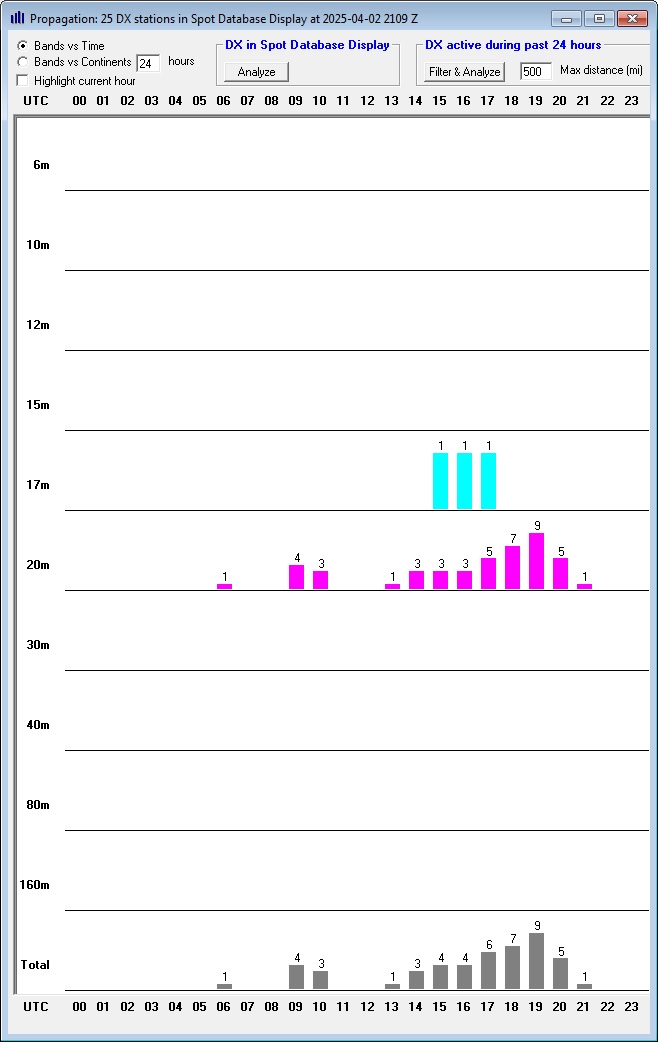
What Bands Are Open to Where Right Now?
Scan DX movie (enable your audio)
Propagation Resources
Understanding and Using Propagation to Work the World (Anita AB1QB)
Long-Path Propagation Revisited (Bob NM7M)
The Little Pistol's Guide to HF Propagation(Bob NM7M)
The Big Gun's Guide to Low-Band Propagation(Bob NM7M)
